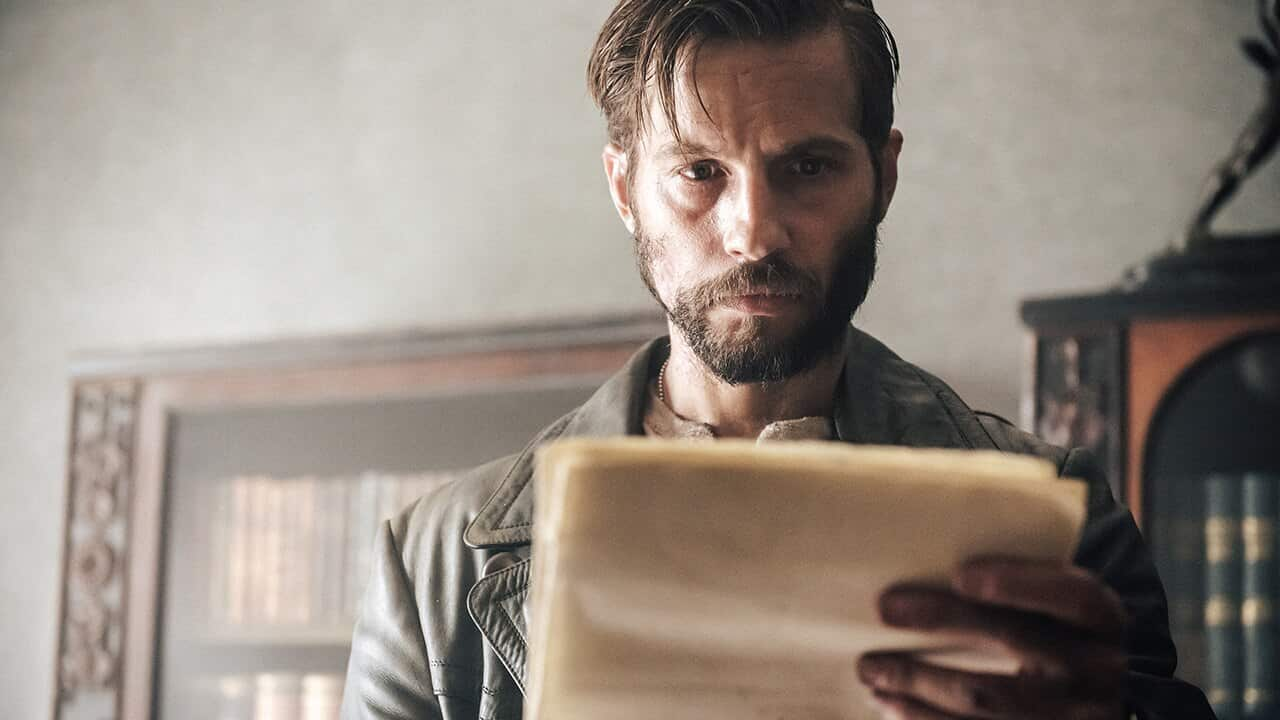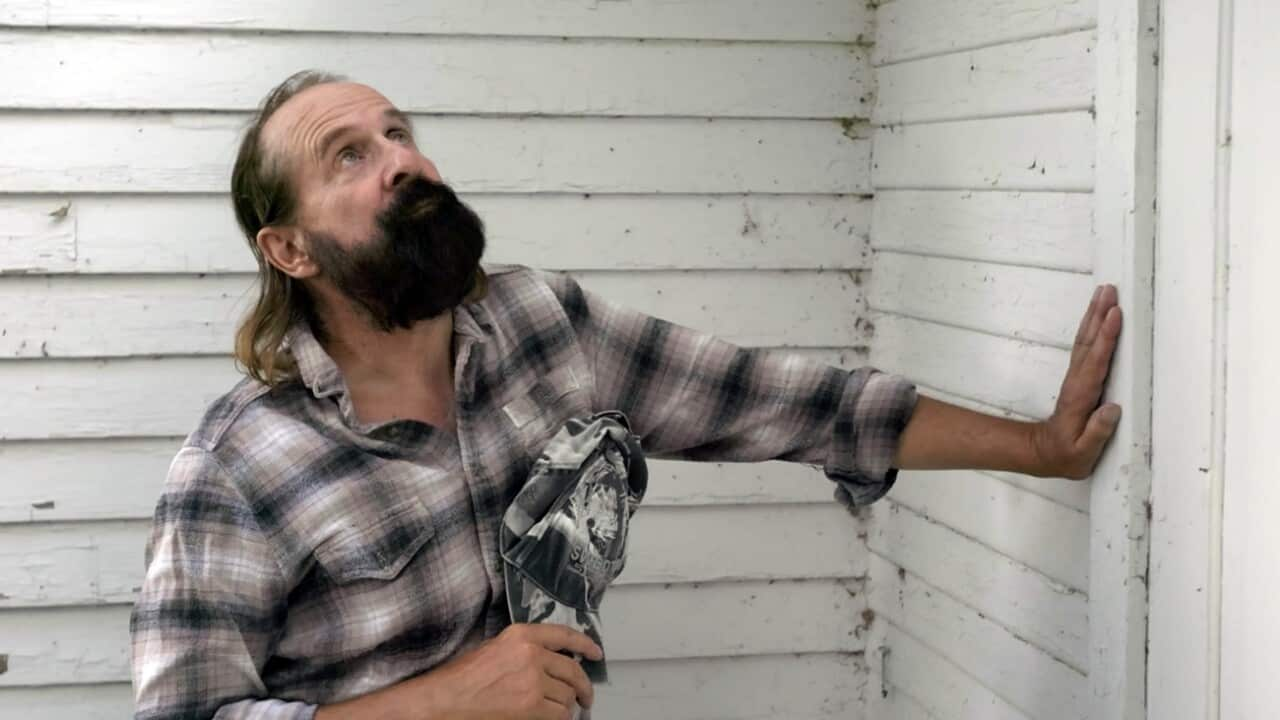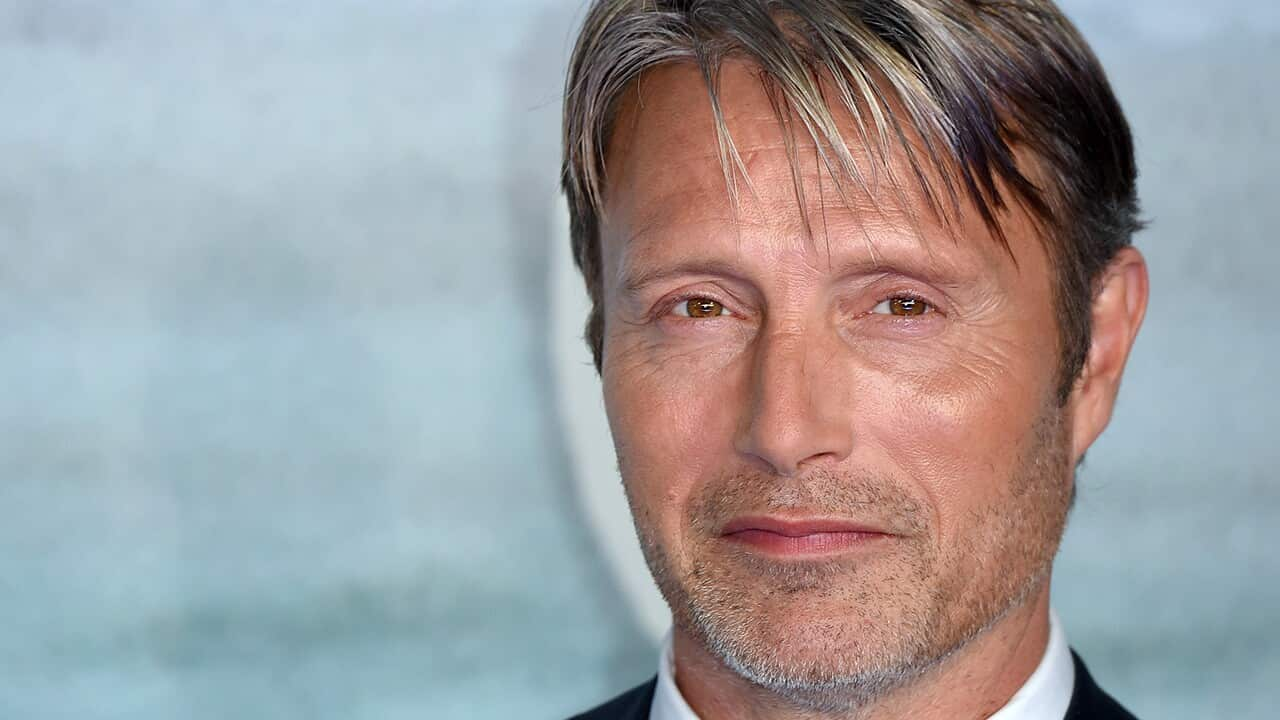Swedish writer/director Måns Mårlind (The Bridge, Midnight Sun) has created a dark eight-part crime drama series set in the lawless turmoil of post-World War II Berlin.
Filmed on several sets around Prague, begins with a New York cop, Max McLaughlin (Taylor Kitsch) being sent to set up a police force in Berlin in the summer of 1946. While his main task is to take down the city’s Al Capone, Werner ‘Engelmacher’ Gladow (Sebastian Koch), McLaughlin has a secret ulterior motive: to find his missing brother Moritz (Logan Marshall-Green), a US soldier who has returned to Germany to hunt down unrepentant Nazis and kill them using the sort of creatively brutal methods that highlight Mårlind’s roots in Nordic Noir.
The Guide sat down with Mårlind to talk about what drove him to create Shadowplay, the German children’s story that inspired the series, the rise of right-wing extremism, and his interest in the innermost secrets people carry. What is Shadowplay about?
What is Shadowplay about?

Nina Hoss and Taylor Kitsch lead the cast of 'Shadowplay' Source: © Tandem Productions and Shadow Play
I think that I wanted to tell a story about people who were broken and I wanted a setting that was fitting for these kinds of characters. Berlin 1946 turned out to be a very good setting, a setting that in itself prolonged the characters. I think that a place without hope which is complete darkness was what Berlin 1946 was and which I think is comparable to Syria today. I think that’s a really good arena to tell a story because everything is pushed to a maximum in those kinds of places and you really see what the human race is – if they’re pushed to the good or if they’re pushed to the bad. So that’s where I started. Berlin in 1946 is an interesting time and place to see on screen. It’s a very underutilised time that we haven’t seen a lot in film and TV series.
Berlin in 1946 is an interesting time and place to see on screen. It’s a very underutilised time that we haven’t seen a lot in film and TV series.

Måns Mårlind on set for 'Shadowplay'. Source: © Tandem Productions and Shadow Play
Yeah, I’m happy you say that because the thing was that we’ve seen a lot of second World War, we’ve seen a lot of Cold War, but this specific time was something that we haven’t seen much of. And I remember in the beginning when I started writing, people said ‘well that’s just going to be depressing because it’s just going to be ruins and it’s just going to be hunger’. But I thought we can actually show hope here, we can show humanity and goodness here, because I think that light is never as visible as in darkness. And for me, I hear all the time that it’s a very dark story but I’m Scandinavian so I don’t think that. But I think if you want to tell something good about people or good about something, I think you must tell a dark story because otherwise, it will become Disney.
Shadowplay has a blend of Scandi Noir aspects wrapped up in a thrilling post-war drama but we don’t have the usual dark Scandi look. Even though we’re in this smashed up Berlin, there’s lots of colour, the sun’s always shining, it’s always vibrant. Was that your way of showing that hope still exists within it?
Two things – of course I think that everything serves the story – characters, dresses, the wall paint, the light, everything is just a prolongment of how the characters in their parts are. The other thing is that Berlin has always been a synonym with blue, grey, dark, cold and I read somewhere, because I did extensive research for this story, that Berlin was really hot in 1946. So, I thought OK, perfect and I saw these images of Syria on the news all the time and I thought that’s what Berlin is going to look like. Forget about how you are used to seeing Berlin. I kept reading about the dust – the dust was everywhere at that time and it would get into your hair, your mouth, your food and when you were sleeping – imagine that being hot as well.

Taylor Kitsch and young cast members on set. Source: © Tandem Productions and Shadow Play
What is your connection with the German children’s story of Max and Moritz and when did you first realise you could use it in the series?
In Germany kids are brought up on this story from the 1880s or somewhere like that – everyone read it and they still do. That’s how they begin to read. And that was the thing in Sweden too because my father knew about Max and Moritz when I told him about it. But after the second world war, we kind of cut the cords to Germany and then we didn’t know about the story anymore.
I found out about Max and Moritz when I visited the actual restaurant in Berlin called Max and Moritz. I was looking at all these wood cuts for Max and Moritz’s evil mischiefs and I was like ‘Who is this? Who are these guys?’ And this guy told me it’s Max and Moritz. I said ‘Yeah but who are they?’ So, he told me the story, then I googled and I asked has this been made into a film? And it had but only the cute children’s version. But I always warp things in a horrible way because that’s the way I am wired, so my first thought was that this is such an evil story. So, then I had that story but I didn’t know what to do with it. I was thinking, there’s two brothers, that’s good, and then like a year or two later I became fascinated with Berlin 1946 but I didn’t have a motor. I had an arena so I was like how can I tell something about Berlin 1946 and then suddenly I went OH! and solved it. You connect these things – Max and Moritz into this arena that I really like – two American brothers.
I started to spin the story and then I had the motor that I needed. I wanted to tell the story of the horrific time and place of Berlin 1946 but that’s not a dramatic motor, that’s just arthouse where you are seeing stuff that is not thrilling, so I thought if I have a thrilling way into this world, people will start caring about raped women in Berlin in 1946.
You’ve used the technique of breaking the fourth wall in the series, which creates a mystery around who the characters are talking to at times. Was that your intent?
Yep, absolutely. I call them the ‘secret moments’ because I wanted everyone to have a secret that they hadn’t told anyone. And the idea is for the audience to decide for themselves what they believe. I remember there were some producers on German TV or something who said why don’t you tell this in real scenes like subtext and I thought, I know what you mean – that’s ordinary storytelling but I wanted to do something that only the audience and that character shared. And I think that’s an interesting way to get a personal connection between each character and the audience.
The idea was there’s three kinds of personal lives we have – we have a professional life that we are sharing right now, then we have our personal life that we share with our family, and we have our secret life that we don’t share with anyone, our secrets. You never get as close to anyone as when you get to hear and see their secret life. So, it was about trying to get a highway into the personal depths of a character.

Taylor Kitsch in ‘Shadowplay’. Source: © Tandem Productions
Yeah, and it was happening as it got made. In the beginning I was scared about who will give a damn about Nazism today because it seems like who cares? It’s gone, you know. So five or six years ago when I started writing, I really thought that no one will give a damn about this but then suddenly, boom, it’s more and more this is happening today. And then you have Trump. I saw pictures of people in Helsinki the capital of Finland walking down the streets with Nazi swastikas and stuff like that – that was three years after I began writing.
I’m not sure about the situation in Australia but in Europe and America of course, it’s really bad. I remember I had a line where Max is trying to help a Nazi who Moritz is trying to kill in a vicious way and Moritz says, ‘What’s next, Nazis marching in Florida?’ The thing is Nina Hoss told me ‘Måns this is a very clever line but it’s too clever’ and I said 'Yeah, you’re right' and I removed it because it became too much like I’m trying to say something.
You have regularly collaborated with Shadowplay co-director, Bjorn Stein. Can you tell me about the benefits and challenges of using two directors?
First of all, me and Bjorn are like brothers in a way because we have known each other since we were eight or nine. So we do everything directorially together which means that we prep, we rehearse with actors, and we find a location together. And then the day before the shoot, the producer flips a coin and then decides who takes the first day and who takes the second day because we do it every second day. We don’t want the producer to flip the coin unless it’s the day before because we don’t want to start thinking ‘those are your days and these are my days’ and we start to think I don’t give a damn about your days, I’m just focused on mine.
The thing is we’ve always worked like this – I think it’s almost 20 years. But it’s like, when Bjorn is directing, I’m his best buddy and I’m just there trying to help. And then the opposite the following day. I think it’s the same thing as having a very, very trustworthy producer who’s always on your back and always close to you. But the difference here is that we’re both directors so we can say with positivity to the other one, you’ve got it, move on, stop mucking about, you got the shot, we have lots to do. When a producer tells that to you, you’re always like ‘really’? You have a different agenda; you have a secret agenda.
premiered with a double episode Thursday 4 March on SBS. Episodes will continue weekly at 9:30pm from Thursday 11 March. New episodes will be available at each week on the same day as broadcast. Shadowplay will also be subtitled in and , available to stream for free at SBS On Demand. Each subtitled episode will become available at the same time as broadcast. Start with episode 1:












